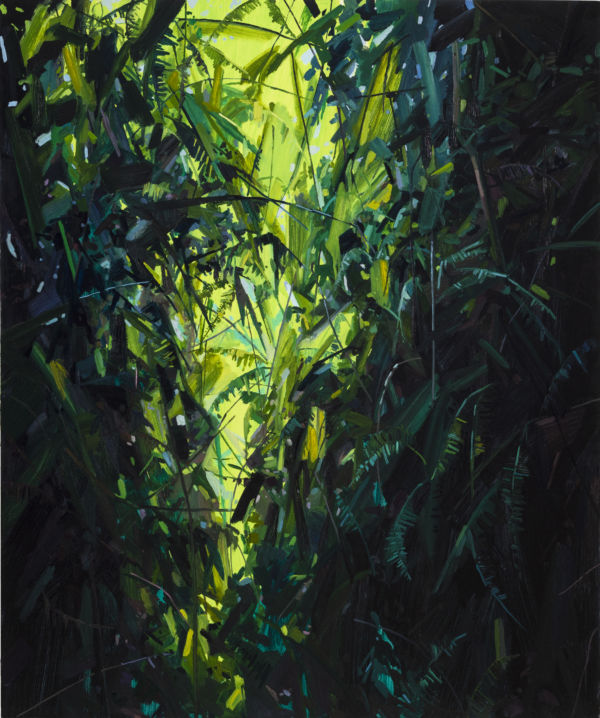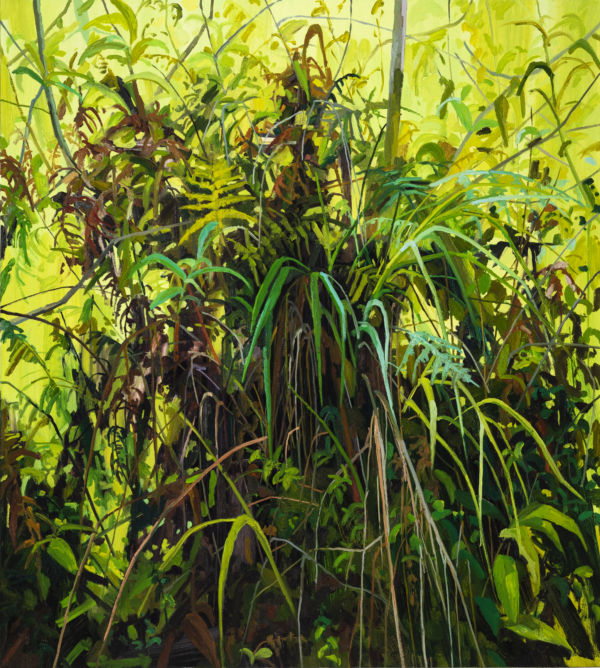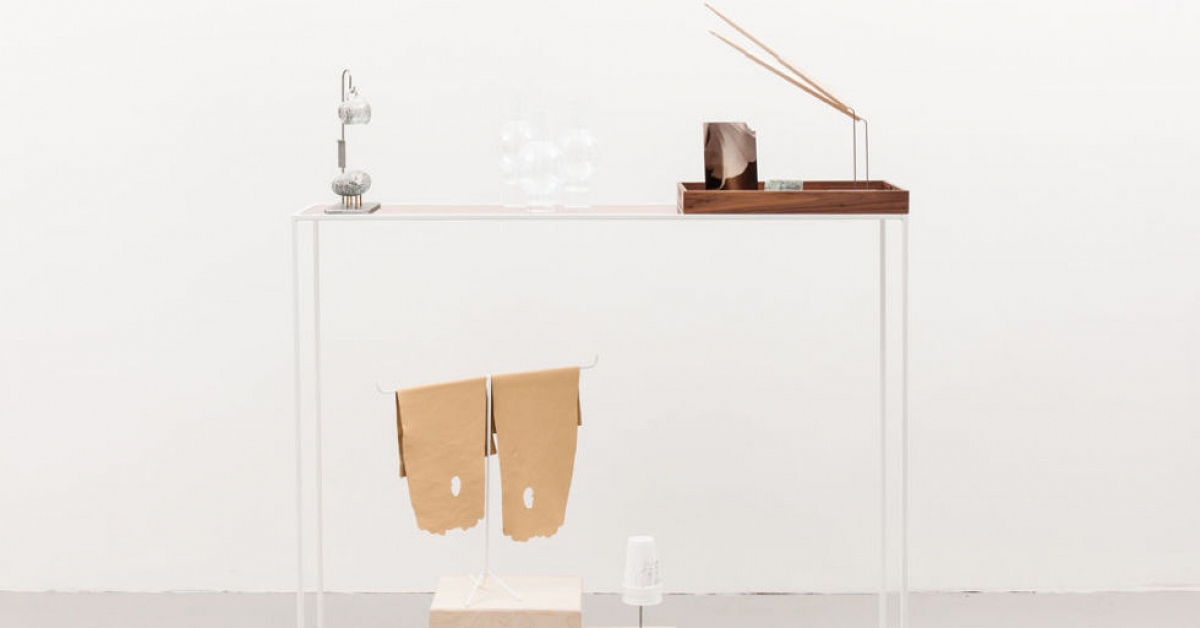Claire Sherman’s Leafy Canvases
Hyperallergic / Mar 30, 2019 / by Louis Bury / Go to Original
Packed with verdant splays of moss and fern, dark clumps of rock and soil, and tumbling surges of water, the large-scale landscapes in Claire Sherman’s New Pangaea at DC Moore Gallery, convey, in their shadowy overgrowth, the sense that something is hidden. In “Leaves and Vines” (2017), an allover thicket of jagged, mossy green brushstrokes admits, like a curtain left a crack open, a wedge of sun-brightened foliage. In “Holes” (2017), two indistinct dark patches beckon amid an otherwise dense underbrush. The low vantage points of both “Waterfall” paintings (2018, 2019) allow dusky cliff faces to occupy the bulk of both compositions, leaving visible only a sliver of tree-filled daytime sky toward the top of each canvas. Even in the more aerated compositions, where larger sections of sky peek through the bramble, a mysterious fog hangs over the scene, as in the ashen swoops of paint that form the gauzy background of “Vines” (2019).

Painted wet-on-wet in a single day, each canvas contains accretive layers of lush, oily color, hiding — and revealing, in glimpses — their bottommost layers. Sherman’s stirring brushwork has the expressive range and visual feel of abstract mark making — particularly in its streaky blends of yellow-greens, blue-violets, and other harmonic colors — yet the larger canvases read as figurative.

The push-pull between abstract gesture and figurative gestalt also manifests in the paintings’ captivating tension between movement and stasis. The two waterfalls embody this tension through vigorous brushwork that implies motion. But this dynamic animates even the stiller works, as in the droopy individual reeds of grass in “Grass and Ferns” (2019), which seem to erupt from the canvas’s center like the comet tails of an exploded firework. Sherman depicts relatively undramatic fictional landscapes—composites of imagery from her travels—with stylized drama, rendering the works as much about painting itself, and its delightful, tactile illusions, as they are about nature’s own allures.

Painted wet-on-wet in a single day, each canvas contains accretive layers of lush, oily color, hiding — and revealing, in glimpses — their bottommost layers. Sherman’s stirring brushwork has the expressive range and visual feel of abstract mark making — particularly in its streaky blends of yellow-greens, blue-violets, and other harmonic colors — yet the larger canvases read as figurative.

The push-pull between abstract gesture and figurative gestalt also manifests in the paintings’ captivating tension between movement and stasis. The two waterfalls embody this tension through vigorous brushwork that implies motion. But this dynamic animates even the stiller works, as in the droopy individual reeds of grass in “Grass and Ferns” (2019), which seem to erupt from the canvas’s center like the comet tails of an exploded firework. Sherman depicts relatively undramatic fictional landscapes—composites of imagery from her travels—with stylized drama, rendering the works as much about painting itself, and its delightful, tactile illusions, as they are about nature’s own allures.






